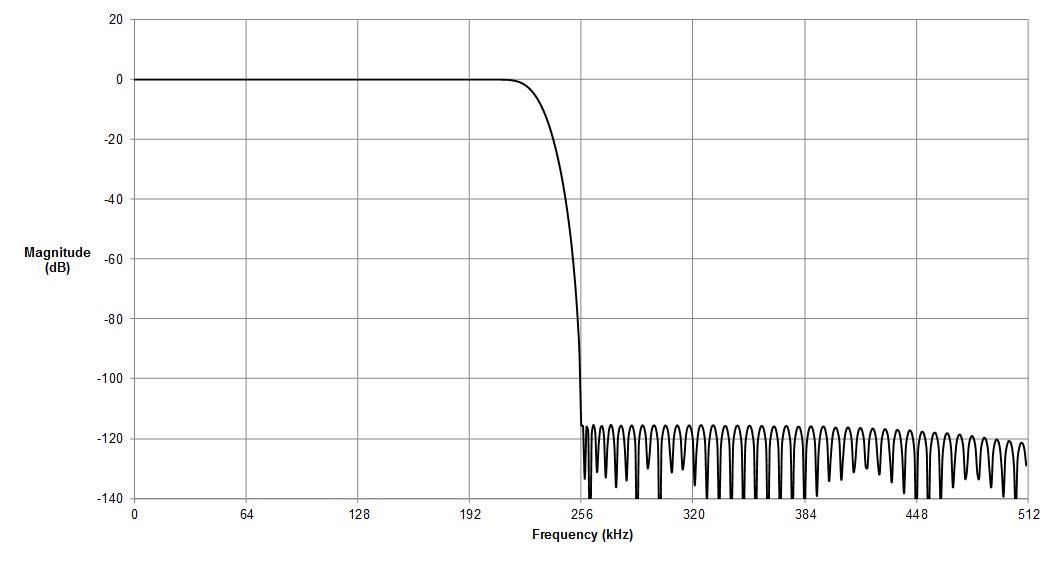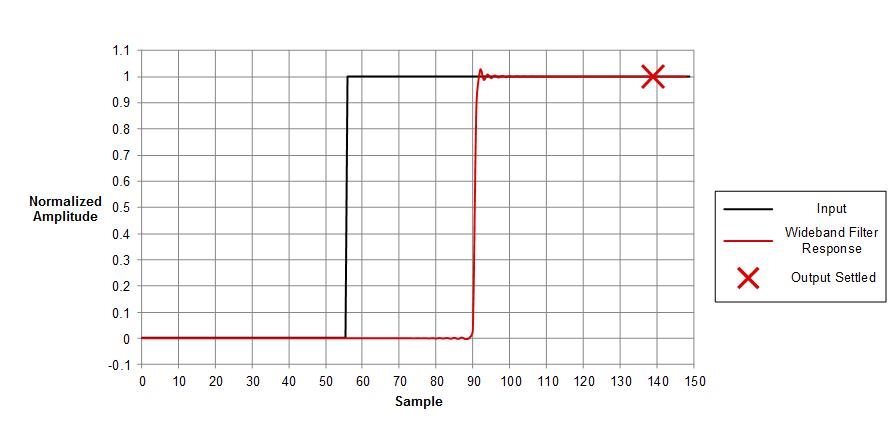In my last blog post, I talked about sinc filters and their unique relationship with delta-sigma analog-to-digital converters (ADCs). I explained that sinc filters are great for applications with low bandwidth because of their quick settling time and low-pass characteristics.
But what if your application isn’t low bandwidth? What if you would like to measure sound or vibrations? What if you want to build a test and measurement system that can collect data on high-frequency signals? Should you abandon delta-sigma ADCs altogether? Of course not! There is another type of digital filter that is sometimes integrated into delta-sigma ADCs: the wideband filter.
Alternating current (AC) applications require a wide passband with little attenuation or ripple, but still require the precision that comes standard with the oversampling topology of a delta-sigma ADC. That is why some ADCs are designed with a wide passband filter that has a steep transition band. The ADS127L01, a 24-bit delta-sigma ADC optimized for wide-bandwidth applications, has such a filter. Figure 1 shows the filter’s magnitude response up to the ADC’s output data rate, fDR, which is 512kHz in this case. Note how steep the transition band of the filter is around fDR/2 – the frequency where signals begin to alias into the passband. This serves to drastically limit unwanted signals or noise from folding over. The stopband magnitude never exceeds -116dB until the filter’s response repeats around the ADC’s modulator frequency, fMOD.
Figure 1: Magnitude response for the ADS127L01 wideband filter up to fDR
For higher-bandwidth applications, the sinc filter is less adequate for a couple of reasons.
First, the frequency response rolls off early and droops at relatively low frequencies. This limits the usable signal bandwidth. On the other hand, the wideband filter remains almost perfectly flat until around fDR/2, maximizing the usable signal bandwidth for any given data rate.
Second, aliasing is more of a concern for AC applications. The sinc filter is not ideal because it does not attenuate sufficiently at half the ADC’s output data rate, fDR/2. Alternatively, the wideband filter features exceptional stopband attenuation, which minimizes aliasing.
For ADCs without integrated digital filters, options are limited for achieving such a steep anti-aliasing response. High-order analog anti-aliasing filters with steep roll-offs are notoriously difficult to design and are subject to component tolerances and temperature. Alternatively, you could oversample the converter and digitally filter in the processor, but this comes at the cost of instruction cycles, which may be precious in high-speed applications. A wideband filter in a delta-sigma ADC truly solves this problem with its built-in “oversample, low-pass filter, then decimate” topology.
The trade-off with all digital filters is that, in exchange for superb frequency-domain performance, you pay in the time domain. After applying a step function to the input, the ADS127L01’s digital filter requires 84 output sample periods to settle to the final output. For this reason, wideband filters are not ideal for applications that cycle between multiple-signal source inputs.
Figure 2 shows the step response of the ADS127L01’s wideband filter.
Figure 2: Response of the ADS127L01 wideband filter (red) to a unit-step input (black)
The filter has a linear phase response, which means that its group delay (the delay due to phase shifting) will be constant across frequencies. For this filter, the group delay is 42 output data samples.
The wideband digital filter in delta-sigma ADCs provides an ideal functional block for wide-bandwidth, precision-measurement signal chains where you don’t have to multiplex between different signal sources. The flat passband with low ripple ensures that you don’t lose in-band signal content, and the steep transition and excellent stopband attenuation provide flexibility in environments where anti-aliasing is critical. On top of that, you can still enjoy the precision that you expect from a delta-sigma ADC.
Subscribe to the Precision Hub blog to receive alerts about more posts from me or my signal chain collegues!
Additional resources
- Read more blog posts about delta-sigma ADCs.
- Find more than 100 data-converter technical resources in our Data Converter Learning Center.
- Download the e-book, “Best of Baker’s Best: Delta-Sigma ADCs” (MyTI login required).
- Explore TI’s portfolio of precision ADCs and find related technical resources for your design.



-

Mahabir Prasad
-
Cancel
-
Up
0
Down
-
-
Reply
-
More
-
Cancel
Comment-

Mahabir Prasad
-
Cancel
-
Up
0
Down
-
-
Reply
-
More
-
Cancel
Children